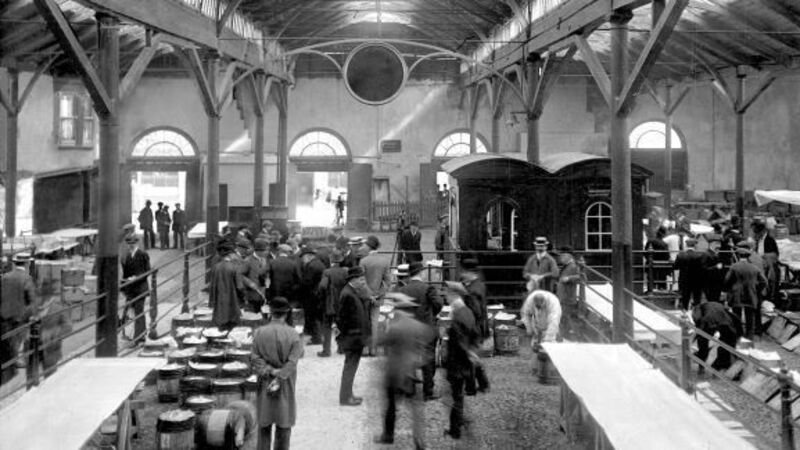Grind some bones to make your bread

SHOCKING enough to hit the headlines today, the substitution of genuine articles by inferior ones was an everyday occurrence throughout the world only a century and a half ago.
Floor-sweepings in pepper, sheep dung in tea, red lead in boiled sweets, and alum (a mineral salt, present in today’s deodorants) for so many things — to make bread whiter, pickle greener, and wine brighter. Standards may not have been so sloppy in the distant past.
In 15th century Dublin, for example, the bakers’ guild set benchmarks for the quality of bread, and investigated complaints about the city’s bakers. Cork had a weigh-master in the Butter Exchange who checked and graded barrels of butter. In the Paris markets, pigs’ tongues were examined for ulcers; and in Venice, fishmongers’ stalls were checked daily. In Lydd, Kent, the corporation banned the sale of “measely flesshe”. Garblers used sieves to remove impurities from spices; while inspectors investigated what went into sausages and blood puddings. One ale inspector in London checked for too much sugar by sitting in a pint of the liquor to see if it stuck to his breeches when he got up.
However, with the rise of modern chemistry in the early 1800s, manufacturers could learn the formulae to adulterate food and drink.
“It is difficult to mention a single article of food that is not adulterated,” wrote Theodore Sedgwick in Public and Private Economy (1836).
Even some of the substitutes used in adulterated products were themselves adulterated. ‘Chicory’ used in coffee might be made from roasted carrots and turnips.
To increase the weight of loaves, bakers began to add alum, plaster of paris, mashed potatoes, even old bones to dough. Sand, dust and lumps of matting made their way into sugar. Dairymen sold cream thickened with rice powder, watered down milk, and added chalk to perk up the colour of milk from diseased cows.
Genuine tea was expensive, but used leaves could be bought by any dishonest dealer for a few pence per pound from London hotels, coffee shops and rich people’s servants. They were boiled with ferrous sulphate and sheep dung, coloured with Prussian blue and verdigris, then resold. Trade in ‘smouch’ — a mixture of tea and dried ash leaves — was also flourishing.
Liquor, too, was frequently tampered with. Melted lead and a piece of bacon was believed to prevent wine from going bad. To save on the cost of hops, some brewers added strychnine to beer, and green vitriol to revive its frothy ‘cauliflower’ head once they had watered it down.
The chemist Frederick Accum was first to raise public alarm. His ‘Treatise on adulterations of food and culinary poisons’ (1820) carried on its title page a skull and the words, “There is death in the pot”. He reports the “detestable custom” practised by butchers and fishmongers of “blowing” on meat and fish to make it glisten and appear plump; adding, “Who can bear the notion of eating meat which has been filled with air of a dirty fellow perhaps inflicted with the very worst of diseases!”
According to him, any unscrupulous manufacturer wanting to increase profits by using inferior substances would probably get away with it: “The man who robs a fellow subject of a few shillings on the highway is sentenced to death but he who distributes a slow poison to the whole community escapes unpunished.”
Eventually, laws were introduced to regulate what went into food and drink. Dr Charles Cameron of Dublin was one of seven public analysts appointed by the Food Adulteration Act of 1860. In the first of his 59 years in the job, he examined 19 samples of milk and found that only one was pure.
More laws followed. Public analysts were appointed throughout Britain and Ireland. Manufacturers found guilty of adulterating food were fined. A Margarine Act (1887) protected the public from substances claiming to be butter by requiring the word ‘margarine’ be written on the top, bottom and sides of each packet in letters of at least three-quarters of an inch high.
Despite these laws, some rogue traders have continued to sidestep the law. In 1969, an Italian man was caught selling Londoners “grated Parmesan cheese” which turned out to be grated umbrella handles.
Even today, at the height of the horsemeat scandal, one might find in the news a remark such as this: ‘It is common practice to bring to market the carcasses of such animals as die of themselves.” But it doesn’t come from a current daily, it’s from Accum’s Treatise of 1820. Nothing new.











